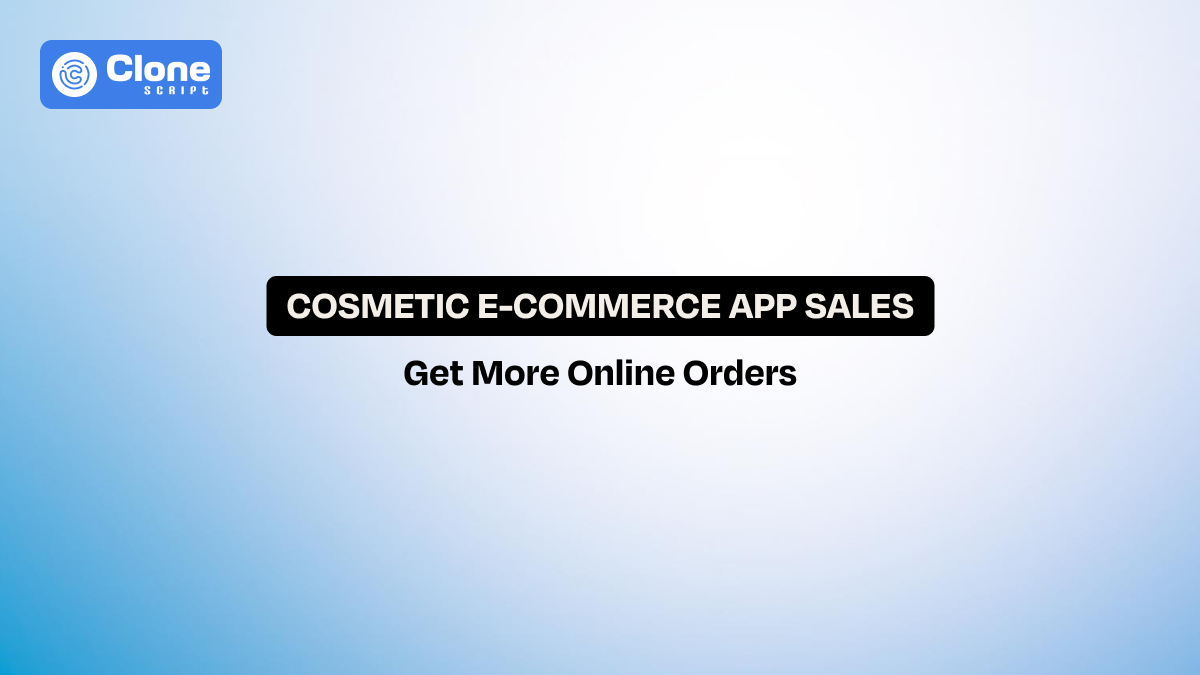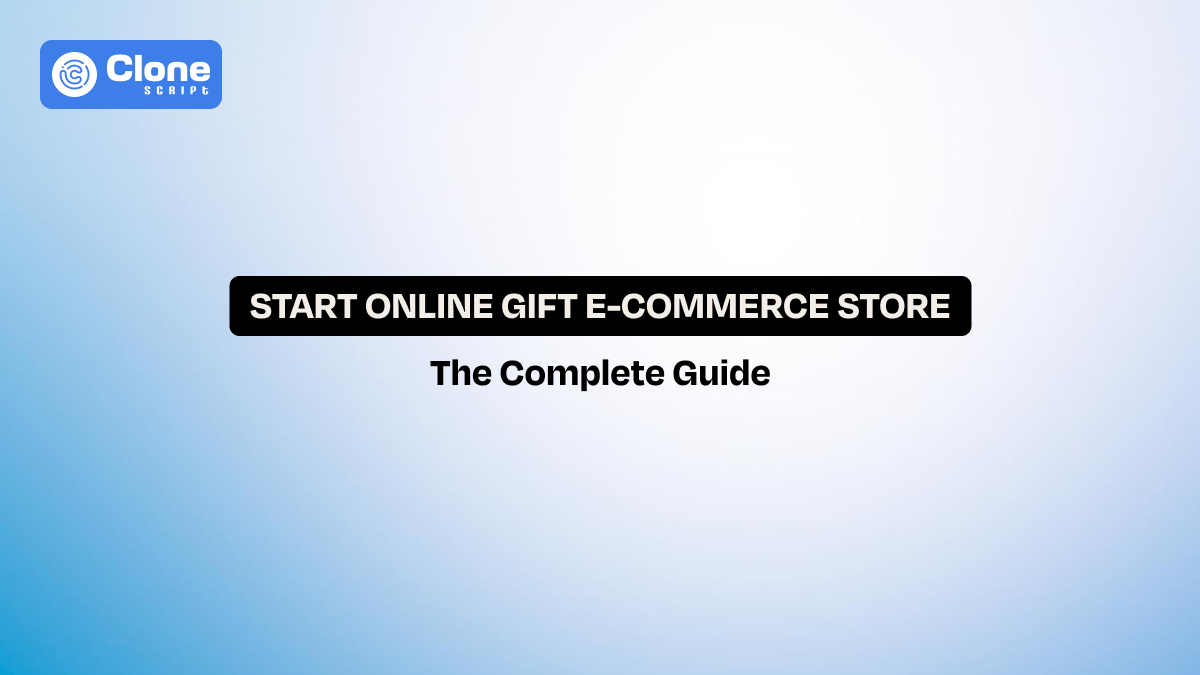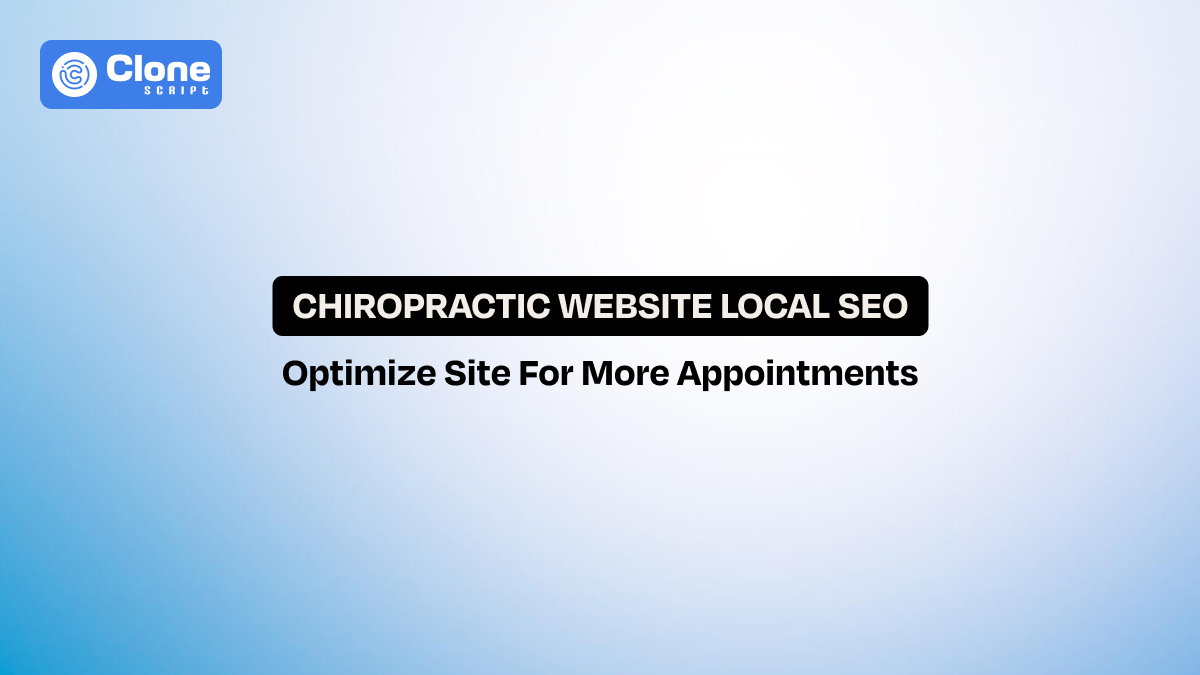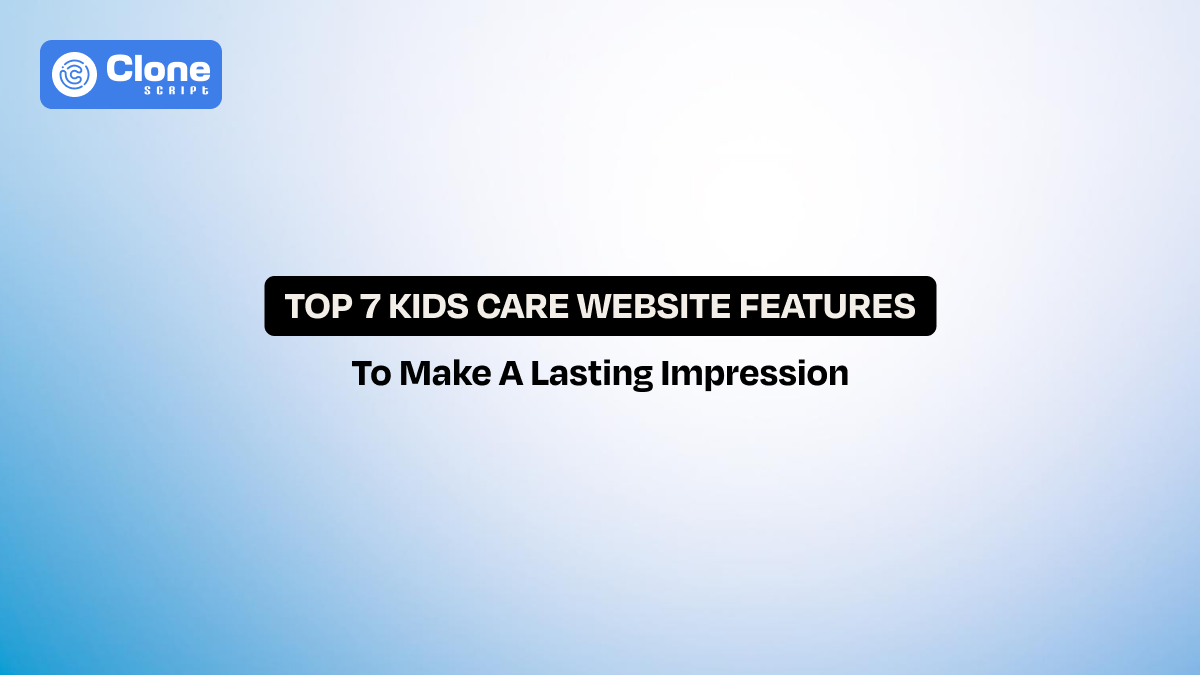10 Must-Know Tips to Drive More Sales on Your Cosmetic E-Commerce App
The way people shop for beauty products has fundamentally changed. Instead of browsing shelves at department stores, today’s customers scroll through cosmetic e-commerce apps, comparing shades, watching tutorials, and checking reviews before purchasing. This shift presents both opportunities and challenges.
On one hand, a well-designed beauty app can reach millions of customers instantly. On the other hand, competition is fierce, and customers have little patience for poor design or generic marketing. If you’ve been asking yourself how to increase sales on a cosmetic e-commerce app, the answer lies in combining customer insights, seamless design, and smart marketing strategies. Here are 10 proven tips every business owner should apply.
Tip 1. Understand Your Audience
Success in beauty e-commerce development starts with knowing exactly who you’re selling to. Unlike other industries, cosmetics are highly personal—customers choose products based on age, skin type, lifestyle, and even personal values. Without a deep understanding of these differences, your marketing campaigns and product recommendations will fall flat.
Action steps to be taken:
-
Segment customers by needs: Create groups such as Gen Z vegan beauty buyers, millennials seeking multitasking skincare, or luxury-focused professionals.
-
Use app analytics: Monitor browsing habits, most-searched items, and drop-off points in the shopping journey. From here, you can decide on where the improvement is needed, a UI design or a product listing that can be easily found.
-
Run quick polls & surveys: Ask users about preferred shades, product formats, or packaging styles. So, if any difficulty they face while browsing the platform comes to the surface and is solved before it becomes a red flag.
-
Develop buyer personas: Example: “Sophie, 25, eco-conscious, shops cruelty-free skincare under $30.” This kind of approach helps in marketing campaigns or any sales offer based on the users' preferences.
-
Listen to social media: Track TikTok and Instagram beauty trends to see what your audience is interested in. A huge share of the audience is depending on social media to find relevant beauty products.
When you know your customers’ pain points—like difficulty finding the right foundation shade—you can provide solutions, turning your cosmetic app into their go-to shopping platform.
Tip 2. Optimize Your App Design
A beautiful product won’t sell if your cosmetic e-commerce app design is confusing or slow. Customers expect quick, intuitive, and visually appealing shopping experiences. Every extra click or delay can mean an abandoned cart.
Action steps to be taken:
-
Keep navigation simple: Organize products by skincare, makeup, and haircare, with filters for skin type, shade, and price. Make sure the products are easy to explore and optimize correctly to convince towards purchase rather than pushing.
-
Add smart search: Include predictive search, voice commands, and filters for faster product discovery. So, if a customer wants to buy a premium skin care product but does not know the name, they can write the first three letters, and the remaining will be presented.
-
Leverage AR features: Allow customers to virtually “try on” lipsticks or eyeshadows. These advanced features are still in development as it costs heavily for startups to be integrated. But keeping it in the design workflow helps to add it in the future.
-
Mobile-first optimization: Ensure the app loads within 3 seconds and runs smoothly across devices. From iPhone 15 and Android devices to desktops, the app should work uninterrupted.
-
Personalized home screens: Show returning customers recommended items or recently viewed products. This is called upselling techniques, most brands use to increase sales.
Research shows that apps with streamlined navigation and fast load times see up to 30% higher conversion rates compared to cluttered apps.
Tip 3. Use High-Quality Product Images & Videos
Since customers can’t physically test cosmetics online, visual content becomes your salesperson. Poor-quality images make customers hesitant, while professional, engaging visuals build trust and drive purchases.
Action steps to be taken:
-
Show 360° views: Let customers zoom in to see packaging, colors, and textures. This feature helps them to decide whether the product can be purchased or simply ignored by others.
-
Upload tutorial videos: Demonstrate how to apply products and show real results. Showcasing the best method for usage increases the chances of purchase and drives better conversions.
-
Use before-and-after shots: Highlight the impact of skincare or makeup products. To highlight how your beauty products are helping people, the before-and-after image helps the customers relate to it and adds it to the cart.
-
Encourage user-generated visuals: Feature customer photos in product reviews. A first-time customer never believes in a new brand until they find relevant feedback from previous customers.
-
Maintain brand consistency: Use uniform lighting, clean backgrounds, and on-brand styling. Through consistent branding, you’re creating an impression to make a worthy decision.
A Shopify study revealed that adding product videos can increase conversions by 20–30%. This is one of the best cosmetic e-commerce strategies.
Tip 4. Leverage Social Media & Influencer Marketing
Beauty trends start on social media. A single TikTok review can sell out a product overnight. To grow your cosmetic store online, you need to tap into influencer-driven marketing.
Action steps to be taken:
-
Work with micro-influencers: They have smaller but highly engaged communities. You don’t have to depend on digital advertising techniques. Through micro-influencers, you can get genuine users who are likely to make a purchase.
-
Promote user-generated content (UGC): Reward customers for posting looks with your products. If a previous customer shares the Instagram story or LinkedIn review for your products, then highlight it and reshare through the brand account.
-
Run app-linked campaigns: Use Instagram Stories with “Shop Now” links directing to your app. This can create a mega opportunity to convert the users into high sales and drive the expected results of the marketing campaigns.
-
Launch seasonal challenges: Example: “Festival Glam Challenge” showcasing your products. With seasonal campaigns, you can ask people to start taking an interest in products.
-
Track conversions: Monitor clicks, installs, and purchases from influencer partnerships. Through measuring the KPIs, you can know if it is worth working with the same campaign or if a change is needed.
Brands like Glossier built billion-dollar businesses by prioritizing community-first influencer marketing rather than big-budget ads.
Tip 5. Offer Discounts, Bundles & Loyalty Programs
Beauty customers love deals, but they also value exclusivity and rewards. Strategic pricing can increase sales and encourage long-term loyalty.
Action steps to be taken:
-
Product bundles: Sell skincare kits or makeup combos at slightly reduced prices. This kind of deal customers can find relevant, and if their budget is exceeded by 10-20% rather than pre-defined limits, they never abandon it.
-
Tiered loyalty programs: Offer Bronze, Silver, and Gold levels with escalating perks. Customers love to have additional features when buying any product from the app. So, categorizing them through loyalty badges, the 24-hour delivery, free trial, and zero-cost delivery drives conversions.
-
Referral discounts: Reward customers for inviting friends to download your beauty app. It is called word of mouth, where a previous customer recommends the products to shop and they are rewarded with exclusive deals.
-
Flash sales: Create urgency with 24-hour deals or seasonal promotions. If the products are very special and you need to sell them immediately, this technique works better.
-
Personalized offers: Send app-exclusive coupons based on past purchases. With a notification channel, notify the customers that their personalized shopping products, like the beauty cream, are now available with a BOGO offer.
Sephora’s Beauty Insider program is a perfect example—its 25+ million members generate more than 80% of sales.
Tip 6. Implement Smart ASO
Visibility drives downloads and sales. ASO (App Store Optimization) improves app discovery in app stores. Most importantly, if your app is not visible to anyone despite the product quality being superior, no one can make a purchase. It’s a fact.
Action steps to be taken:
-
Use targeted keywords: Optimize with terms like “organic skincare app” or “best beauty e-commerce platform” in every kind of content to be displayed on the app stores.
-
Enhance product descriptions: In product descriptions, include benefits, ingredients, and keywords naturally. From there, the customers decide whether to purchase or not.
-
Create content marketing: Blog about beauty routines and other topics that link readers to your app, generate leads, and convert them to customers easily.
-
Improve ASO: Add keywords to your app title, update screenshots, and encourage positive reviews. Follow the best practice to improve the visibility of your app in the app store by focusing on what users need. Tell how the app is helpful.
-
Focus on local SEO: Optimize for regional trends like “K-beauty in the U.S.” or “Ayurvedic skincare in India.” If the customers are only regional, then a local keyword implementation improves the rank.
Beauty brands that combine ASO see 2x growth in organic installs and traffic within six months.
Tip 7. Personalize Customer Experience
Generic recommendations don’t work in the beauty industry. Personalization makes shoppers feel understood, increasing trust and conversions.
Action steps to be taken:
-
AI-driven recommendations: Through smart AI system deployment in the application, it suggests products based on browsing history. This reduces the dependency on retargeting marketing campaigns to convert those abandoned carts into successful orders.
-
Shade-matching quizzes: Help customers find their perfect foundation or lipstick. By analyzing their preference, the app has to automatically suggest the best products suited to customers. This reduces an ideal time and leads to conversions.
-
Custom push notifications: Example: “Hi Anna, your favorite serum is back in stock!” This kind of message feels personalized to the customer and convinces them to buy the products.
-
Dynamic content: Show different homepage offers depending on user preferences. This can be very helpful in increasing the order volume and trying to present other relatable products to customers.
-
Tailored bundles: Auto-suggest complementary products for a complete routine. When a customer needs only lipstick but is offered other products like a foundation kit and suncream at a low cost, then it increases the purchase quantity.
According to Deloitte, 80% of beauty app users are more likely to purchase when offered personalized recommendations.
Tip 8. Ensure Secure & Smooth Payment Gateways
Even the best cosmetic apps lose customers at checkout if payments feel unsafe or complicated. Speed and security, these two factors are always a priority for both customers and e-commerce businesses.
Action steps to be taken:
-
Offer diverse payment options: The payment options should not be limited to only two or three methods. Include credit cards, PayPal, Apple Pay, Google Pay, and BNPL services as payment options to increase conversion rate. A trusted payment gateway integration can manage everything simply.
-
Simplify checkout: The checkout should be in the following order and limit it to 3 steps—cart → payment → confirmation. The minimum steps to complete the checkout create an opportunity to get more orders.
-
Add trust signals: Show SSL certificates, encryption logos, and secure payment icons to let customers know their payment information is safe and stored on unreachable servers.
-
Enable auto-fill: Save customer payment details securely for future purchases. This can reduce the time to add the repeat details and immediately lead customers to complete the checkout.
-
Localize payments: Accept methods like UPI in India or Alipay in China. If the app is developed for a single region, the local payment options help customers to make payments in their preferred method.
A smooth, secure checkout can increase conversion rates by 25%, reducing cart abandonment.
Tip 9. Analyze Data & Continuously Improve
The most successful beauty e-commerce apps don’t stay static—they evolve with customer behavior. Regular analysis reveals where to improve.
Action steps to be taken:
-
Track KPIs: Monitor metrics like average order value (AOV), CLV, and cart abandonment. From there, you can understand what’s going on and make a complete strategy to improve the numbers.
-
Use heatmaps: Identify areas where users spend time or get stuck. This option is usually for app design, where the user judges the platform as being easily accessible without any interruption.
-
Conduct A/B tests: Experiment with different button colors, CTAs, or layout changes. To know what works better and what does not can be identified. So, the time and resources are not wasted.
-
Collect reviews: Use customer feedback to refine features and product listings. Try to make their shopping experience smooth, advanced, and secure by addressing the issues they face.
-
Study competitors: Learn from the strengths and weaknesses of rival apps. Don’t copy them, but get their USP and start an effort to make your app's USP, like offline accessibility and free product trial.
A case study showed a beauty app increased conversions by 25% after analyzing drop-offs and adding a shade-finder tool.
10. Build Trust & Community
Beauty buyers are loyal to brands they trust. Building community ensures long-term success beyond one-time purchases.
Action steps to be taken:
-
Be transparent: Share ingredient sourcing, certifications, and ethical practices. Providing all the information related to products can help customers to decide on the purchase.
-
Engage customers: Host live tutorials, Q&A sessions, and app-exclusive events. Customers are not attracted only by buying quality products; they believe in talking with the brand's authorized persons to bring out the best potential usage of the products.
-
Highlight UGC: Showcase real customer photos and routines. If the previous user is happy with the product usage, make sure to share it across the channels, like the website, social media brand accounts.
-
Educate shoppers: Provide skincare guides, makeup tutorials, and product use tips. Create a tutorial to use the product in the correct direction and method to avoid any misconceptions.
-
Offer excellent support: Fast, friendly customer service keeps users loyal. With daily support through mail, chatbot, and phone calls, you can manage the customer base easily.
Brands like Fenty Beauty have built communities by making customers feel secure, included, and valued.
Conclusion
Growing a cosmetic e-commerce app isn’t just about selling products—it’s about creating meaningful experiences. Customers want beauty solutions tailored to their needs, delivered through seamless apps they trust. By applying these 10 proven strategies—from app design and SEO to influencer marketing and personalization—you can drive more downloads, boost sales, and turn casual shoppers into lifelong brand advocates.
FAQs
- How can I understand my beauty app audience better?
Segment users by age, lifestyle, and preferences. Use analytics, polls, social trends, and buyer personas to identify needs, enabling personalized marketing and product recommendations for higher engagement.
- Why is app design important for cosmetic e-commerce?
A clean, fast, and intuitive app enhances user experience, reduces abandoned carts, and increases conversions. Cosmetic product shopping app features like simple navigation, AR try-ons, and personalized home screens drive sales.
- How do high-quality images and videos impact sales?
Professional visuals, 360° views, tutorials, and before-and-after content build trust, demonstrate product effectiveness, and encourage purchases. User-generated content further boosts credibility and engagement.
- How can social media influence my cosmetic app sales?
Influencers, user-generated content, and app-linked campaigns promote products, increase visibility, and drive downloads. Seasonal challenges and KPI tracking optimize marketing impact and conversions.
- Should I offer discounts and loyalty programs?
Yes. Bundles, tiered loyalty, referral rewards, flash sales, and personalized offers incentivize purchases, build customer loyalty, and increase long-term revenue.
 BTC - Bitcoin
BTC - Bitcoin
 USDTERC20 - USDT ERC20
USDTERC20 - USDT ERC20
 ETH - Ethereum
ETH - Ethereum
 BNB - Binance
BNB - Binance
 BCH - Bitcoin Cash
BCH - Bitcoin Cash
 DOGE - Dogecoin
DOGE - Dogecoin
 TRX - TRON
TRX - TRON
 USDTTRC20 - USD TRC20
USDTTRC20 - USD TRC20
 LTC - LiteCoin
LTC - LiteCoin







